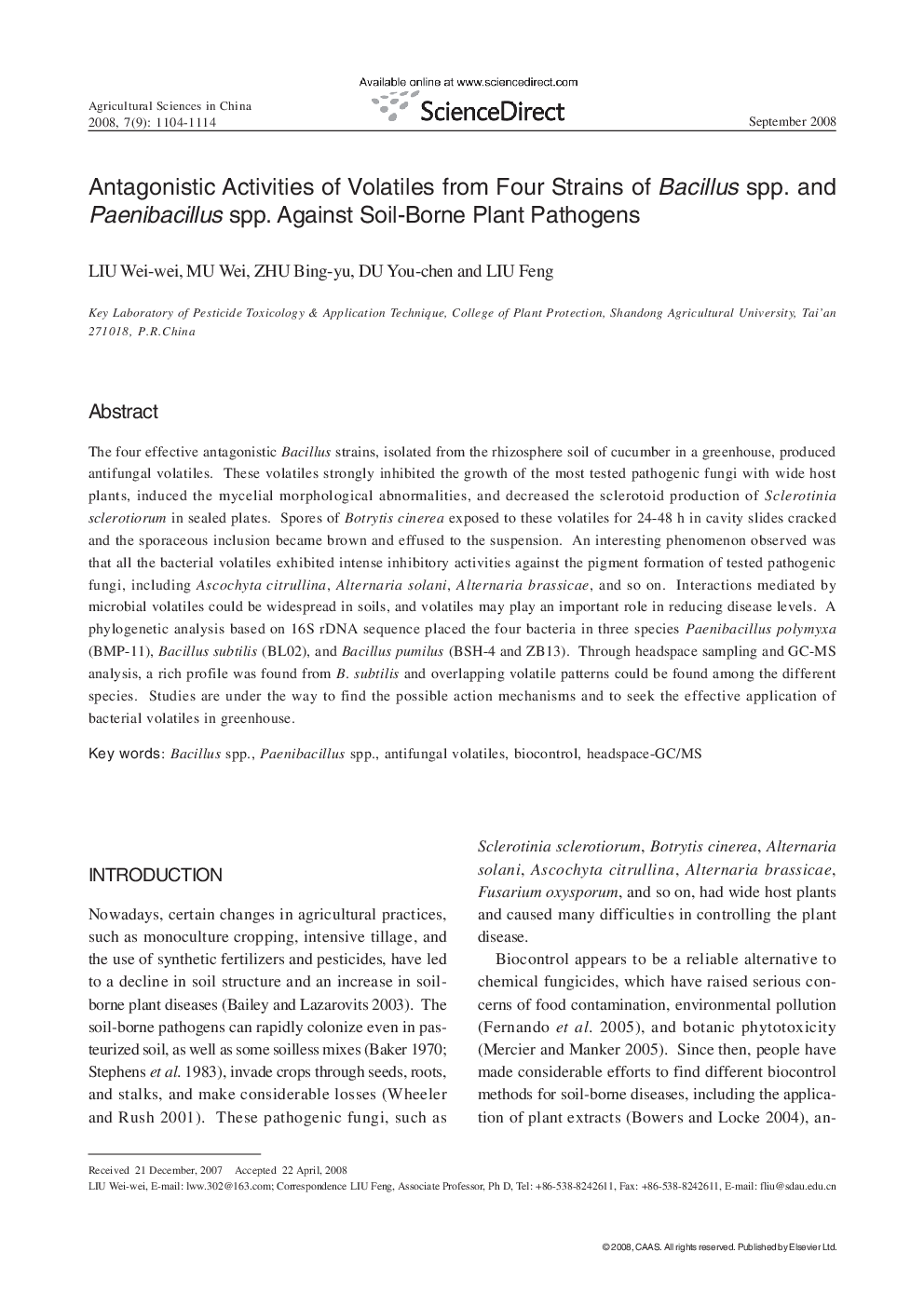| Article ID | Journal | Published Year | Pages | File Type |
|---|---|---|---|---|
| 4490568 | Agricultural Sciences in China | 2008 | 11 Pages |
The four effective antagonistic Bacillus strains, isolated from the rhizosphere soil of cucumber in a greenhouse, produced antifungal volatiles. These volatiles strongly inhibited the growth of the most tested pathogenic fungi with wide host plants, induced the mycelial morphological abnormalities, and decreased the sclerotoid production of Sclerotinia sclerotiorum in sealed plates. Spores of Botrytis cinerea exposed to these volatiles for 24-48 h in cavity slides cracked and the sporaceous inclusion became brown and effused to the suspension. An interesting phenomenon observed was that all the bacterial volatiles exhibited intense inhibitory activities against the pigment formation of tested pathogenic fungi, including Ascochyta citrullina, Alternaria solani, Alternaria brassicae, and so on. Interactions mediated by microbial volatiles could be widespread in soils, and volatiles may play an important role in reducing disease levels. A phylogenetic analysis based on 16S rDNA sequence placed the four bacteria in three species Paenibacillus polymyxa (BMP-11), Bacillus subtilis (BL02), and Bacillus pumilus (BSH-4 and ZB13). Through headspace sampling and GC-MS analysis, a rich profile was found from B. subtilis and overlapping volatile patterns could be found among the different species. Studies are under the way to find the possible action mechanisms and to seek the effective application of bacterial volatiles in greenhouse.
